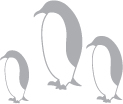Chapter 20 
Good leaders know when to show emotion
For the first six weeks of our expedition all air transport used our two Squirrel helicopters. The Squirrel is a tough, versatile helicopter that can carry up to four passengers and a small amount of luggage. They have a range of around 500 kilometres, give or take 100 kilometres, depending on the weather.
The planes arrive and the pace picks up
But a great deal of our science work, called ‘deep field’ work, took place much further away than the helicopters could go. Deep field work took place far inland on the huge layers of ice that cover the continent. Here the ice is more than 1500 metres thick and is incredibly dense. It has been laid down as snow over countless centuries and packed down into ice by each succeeding snowfall. Scientists calculate that if all the ice were to melt, the global ocean levels would rise by more than 5 metres. Climate scientists speak about catastrophe for our way of life if oceans rise by half a metre!
The scientists working out in the deep field areas did mostly seismic research and glaciology. At other stations ice core sampling is the norm. Scientists extract large cylinders of ice, digging deeper and deeper with each pass. By applying sophisticated equipment to the ice core, the scientists can date the ice and determine the makeup of the Earth's atmosphere at the time the ice was formed. Pretty ...
Get Leading on the Edge: Extraordinary Stories and Leadership Insights from The World's Most Extreme Workplace now with the O’Reilly learning platform.
O’Reilly members experience books, live events, courses curated by job role, and more from O’Reilly and nearly 200 top publishers.

